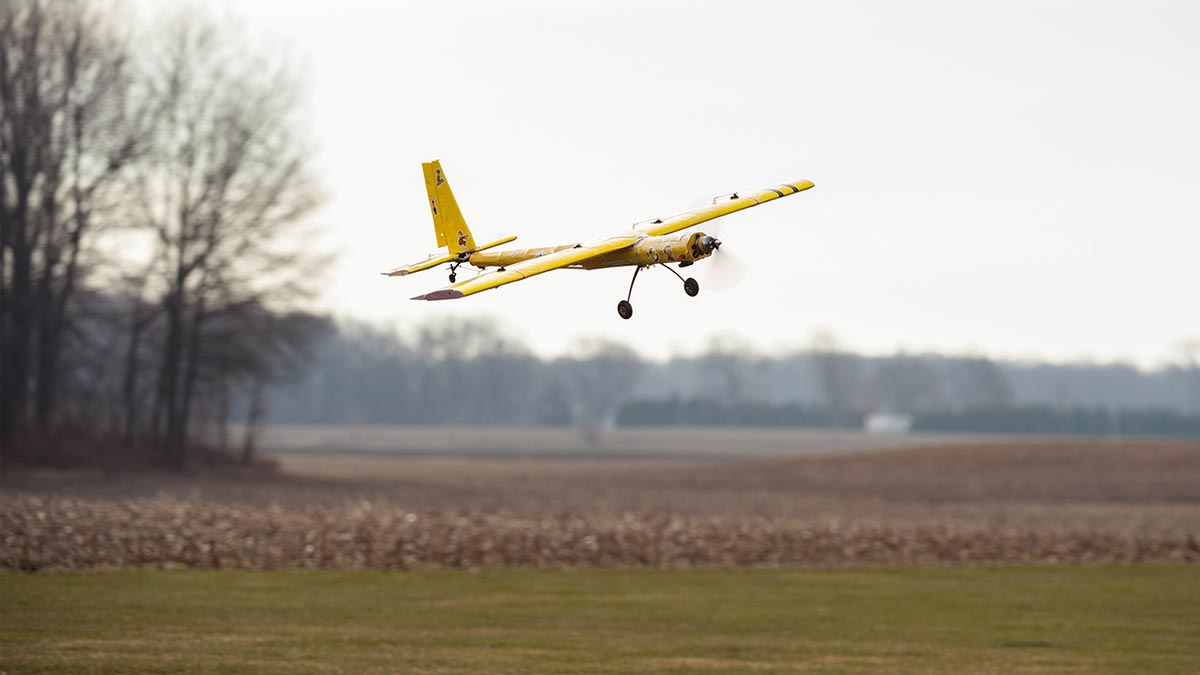For migrating birds and students taking Aerospace Senior Design, spring is a time for flight. In this two-semester capstone class, students design and build a wide array of radio-controlled airplanes.



At the semester’s end, they bring the completed aircrafts to the South Bend Radio Control club (SBRC) airstrip near Notre Dame’s campus to see if the planes can pass the final test: Can they fly?
“This class gives students three challenges,” said Hirotaka Sakaue, associate professor of aerospace and mechanical engineering. “They have to come up with their aircraft’s design on their own, work effectively in teams, and construct a flyable plane in an efficient, cost-effective way.”
Each aircraft has the same mission: follow a pre-determined flight-path and complete five 180-degree turns while carrying a payload of 4-24 golf balls. The aerodynamic, structural, and material choices are entirely up to the students.
One of the student teams, influenced by the WWII Spitfire fighter plane, created an elliptical wing — wide in the middle but tapering towards the wingtips. To increase speed and maneuverability, the group used an unconventional and lightweight V-tail.
Senior Nicholas Slusher’s team chose an H-Tail, connected by slender beams to the main body of the plane. This tail design increases stability, but it also adds weight, which led the team to punch holes in the beams to make it lighter. “We really had to push our design skills to make it work,” said Slusher.
Materials were another area of innovation. One team chose fiberglass, which is lighter and more robust than wood. “We built our plane by hot-wiring our fuselage’s shape from insulation foam, then wrapping it with fiberglass cloth and coating it with epoxy,” said senior Katrina Espinoza, the team’s technical lead.
Weather is an important factor in determining test flight success. Plane motors are lightweight and have limited power, so cross winds strongly affect maneuverability, particularly when landing, said Robert Kistler of the South Bend Radio Control club, which has helped mentor Notre Dame’s aerospace students for 27 years.
The class encourages students to develop technical skills and aerodynamic intuition and also helps them bring out the best in one another. “I learned a lot about discerning my teammates’ strengths and interests and how to delegate accordingly,” said Espinoza. “Good communication is key.”




— Karla Cruise, Notre Dame College of Engineering; Photos by Wes Evard
